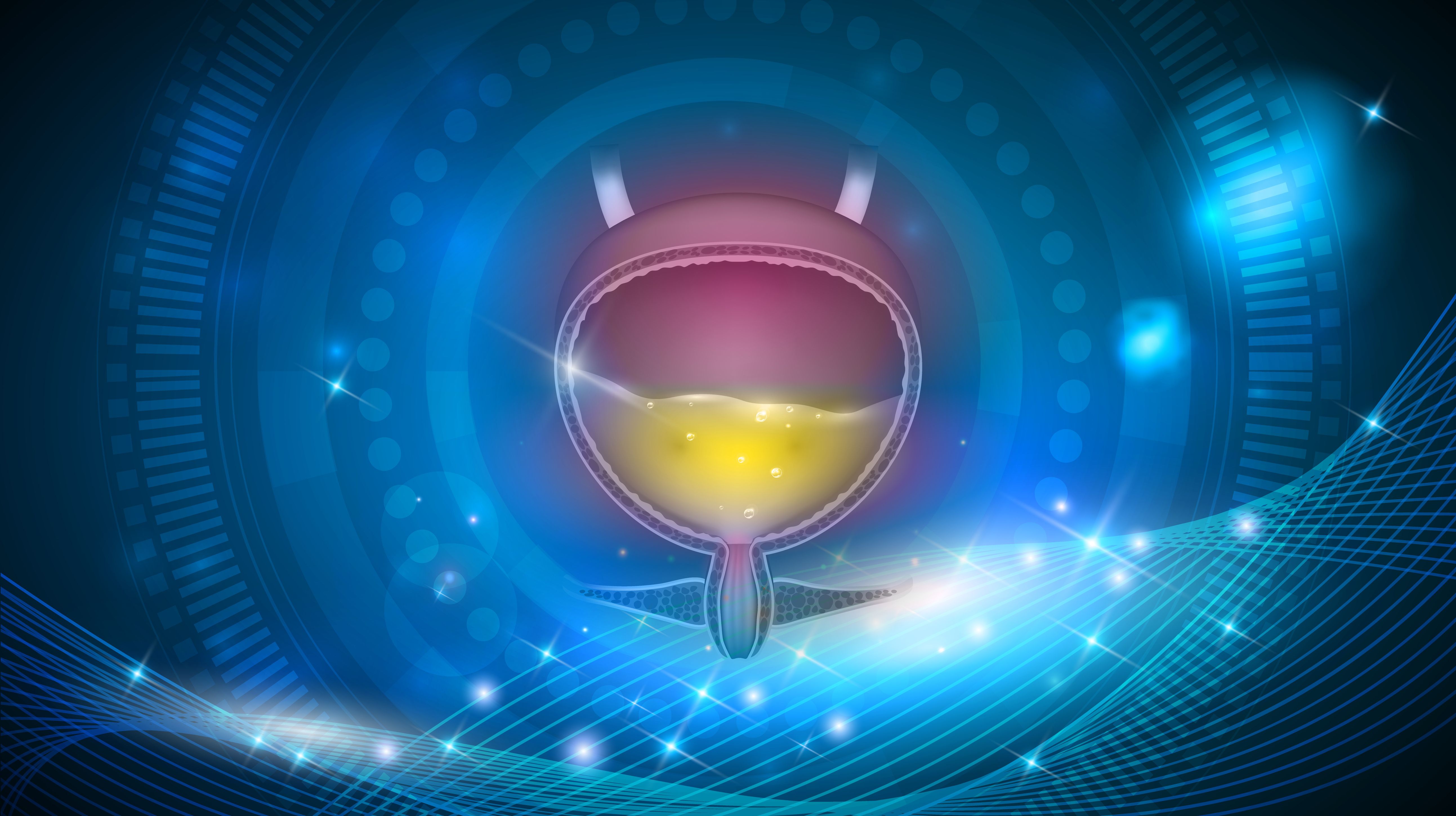UGN-102 Meets Primary End Points in Phase 3 Trials of LG-IR-NMIBC
Topline data from the phase 3 ATLAS and ENVISION trials of UGN-102 showed a robust and consistent therapeutic profile when used for patients with low-grade, intermediate-risk non-muscle invasive bladder cancer.
Image Credit: © reineg [stock.adobe.com]

UGN-102 (mitomycin) intravesical solution demonstrated positive efficacy when used for patients with low-grade, intermediate-risk non-muscle invasive bladder cancer (LG-IR-NMIBC), meeting primary end points in 2 phase 3 trials, ATLAS (NCT04688931) and ENVISION (NCT05243550).1
In the ATLAS trial, the primary end point of disease-free survival (DFS) was met as UGN-102 reduced the risk of recurrence, progression, or death by 55%. The product showed superiority compared with transurethral resection of bladder tumors (TURBT) with a 64.8% complete response (CR) rate at 3 months for patients given UGN-102 vs 63.6% CR rate at 3 months for patients given TURBT.
The ENVISION trial also met its primary end point and showed that patients treated with UGN-102 had a 79.2% CR rate at 3-months following the initial treatment. Both trials showed a safety profile for UGN-102 that was consistent with prior studies and the product was generally well-tolerated.
The secondary end point of duration of response continues to be studied in the ENVISION trial and a new drug application (NDA) for UGN-102 is expected to be submitted to the FDA in 2024, assuming positive findings from ENVISION are reported.
“While TURBT is the standard treatment for bladder cancer, the recurrent nature of LG-IR-NMIBC means that patients will undergo multiple surgeries that come with risks for this older patient population,” said Sandip Prasad, MD, M.Phil, director of genitourinary surgical oncology, Morristown Medical Center/Atlantic Health System, in a press release. “Based on these compelling data, I am optimistic that UGN-102, if approved, may change the treatment paradigm for these patients who lack non-surgical options to manage the ongoing burden of this highly recurrent disease.”
UGN-102 is a sustained release, hydrogel-based formulation designed to enable longer exposure of bladder tissue to mitomycin, thereby enabling the treatment of tumors by non-surgical means. The product is currently in phase 3 development for the treatment of patients with LG-IR-NMIBC.
ATLAS
In the global, open-label, randomized controlled, phase 3 ATLAS trial, investigators are evaluating the efficacy and safety of UGN-102, with or without TURBT, vs TURBT alone in patients with LG-IR-NMIBC.2
A total of 282 patients aged 18 years and older with newly diagnosed or historic LG-NMIBC were enrolled across clinical sites in the United States, Europe, and Israel. Patients were required to have disease at intermediate risk for progression, negative voicing cytology for high-grade disease within 6 weeks of screening, adequate organ, and bone marrow function, and have no evidence of active urinary tract infection.
The study randomized patients 1:1 to receive either UGN-102 or TURBT. In the UGN-102 arm, patients were treated with 6 weekly intravesical instillations of UGN-102, and at 3 months, patients were assessed for response. If patients had a CR to either UGN-102 or TURBT, they were assessed for long-term follow-up for evidence of recurrence. Additionally, in either arm, patients who had a presence of persistent disease at 3-months underwent a TURBT and continued for long-term follow-up for evidence of recurrence.
The primary end point of the study is DFS and secondary end points include time to recurrence, CR, duration of response, incidence of TURBT, changes from baseline in health-related quality of life, and incidence of treatment-emergent adverse events (TEAEs), serious TEAEs, TEAEs of special interest, and abnormal clinical laboratory test results.
ENVISION
ENVISION is a single-arm, multinational, multicenter, phase 3 study assessing the efficacy and safety of UGN-102 for intravesical solution as primary chemo ablative therapy in patients with LG-IR-NMIBC.3
Approximately 240 patients across 56 sites were enrolled in the study given the have histologically confirmed LG-NMIBC that is intermediate risk with negative voiding cytology for high grade disease within 8 weeks before screening. Patients must also have had adequate organ and bone marrow function, and a life expectancy of at least the duration of the trial.
Once enrolled, patients received 6 once-weekly intravesical instillations of UGN-102. Investigators are evaluating the primary end point of CR rate at the 3-month assessment after the first installation, as well as the secondary end point of durability over time in patients who achieved a CR at the 3-month assessment.
“UGN-102 has demonstrated a robust and consistent therapeutic profile across multiple clinical trials, providing a compelling picture of its potential to be a transformational product and advance the standard of care away from repetitive surgery to a minimally invasive, non-surgical option for LG-IR-NMIBC,” said Liz Barrett, president and chief executive officer of UroGen, in a press release.1 “If approved, we anticipate UGN-102 to be a significant growth driver for UroGen as the first-ever non-surgical treatment option for a disease afflicting approximately 82,000 new patients in the United States. each year. We are on track to deliver on our previously shared guidance for [mitomycin] and now find ourselves on the precipice of a new era in bladder cancer care, and that is a very exciting place to be.”